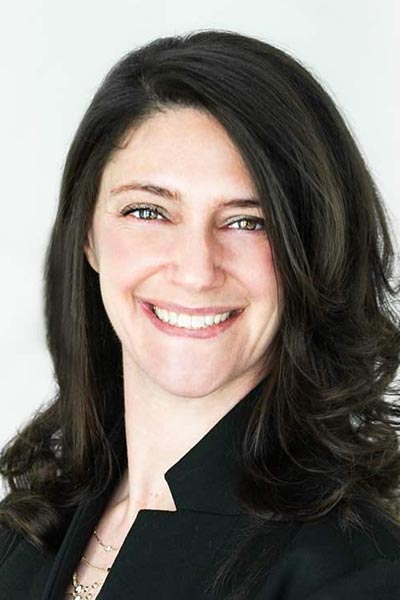Fourth Plenary Session will examine cancer from ecosystem perspective
Growing recognition of cancer as a disease shaped not just by malignant cells but by complex interactions within a larger ecosystem is redefining how researchers and clinicians approach treatment. The fourth Plenary Session at the AACR Annual Meeting 2025—Targeting the Cancer Ecosystem—will examine how new insights into dynamic relationships are opening the door to novel therapeutic strategies aimed at disrupting cancer’s supportive environment.
The Plenary Session will take place on April 29, 8-10 a.m. CT, in Hall B1 of McCormick Place North (Level 3).

“Cancer cells coevolve with noncancerous cell types at the tissue and systems levels. While the complexity of this collective cancer ecosystem creates challenges for therapy, the goal of this session is to highlight opportunities for the development of new treatment modalities based on our current understanding of these heterocellular interactions,” said Plenary Session Chair Mara H. Sherman, PhD, of Memorial Sloan Kettering Cancer Center.
Tuesday’s plenary presentations will provide perspectives on various aspects of the cancer ecosystem, from the importance of spatial dynamics between cancer and immune cells, to how heterogeneity impacts immunogenicity, to efforts to heal the microenvironment and coax tumor cells back to a healthier, homeostatic-like state.
“The speakers in this session all have exciting, impactful scientific insights to share,” according to Sherman, one of this year’s Annual Meeting program cochairs. “The technologies they utilize have great potential for impact across the cancer research community. Even researchers whose main focus seems somewhat conceptually distant to the topic of the cancer ecosystem will find meaningful connections to their own work or perhaps use these technologies to achieve their own research goals.”
Understanding how tumors manipulate their local environment to escape immune detection remains one of the field’s biggest challenges. Kurt A. Schalper, MD, PhD, of Yale University, will explore the spatial organization of cancer cells and immune cells within tumors and how these physical relationships shape immune responses. Given that certain spatial patterns may contribute to immunotherapy resistance, disrupting these interactions could help resensitize tumors to treatment. Schalper is also an Annual Meeting program cochair of this year’s conference.
Equally complex is the heterogeneity within tumor cells themselves, which can dramatically influence immune recognition and interactions. Yardena Samuels, PhD, of the Weizmann Institute of Science, will present new findings on the genomic, epigenomic, and neopeptide diversity that characterizes many cancers. By dissecting how this molecular complexity impacts immunogenicity, Samuels will shed light on the hurdles facing immunotherapies and what it will take to design treatments that more effectively harness the immune system against cancer.
With an increased understanding of the finer details of the tumor microenvironment, the concept of reprogramming the tumor microenvironment is gaining traction. Matthew F. Krummel, PhD, of the University of California, San Francisco, will discuss his team’s work on developing therapies that coax tumor tissue into reverting back to its healthy, premalignant state. Rather than aiming for wholesale destruction, this strategy seeks to leverage the tumor cells’ origin and nudging them back toward a homeostatic balance that may reduce the malignant impact.
Finally, Mariam Jamal-Hanjani, MD, PhD, of the University College London Cancer Institute, will share insights from longitudinal cancer studies that track tumor evolution throughout the body over time, from diagnosis through relapse, metastasis, and ultimately, patient outcomes. Her research highlights the dynamic interplay between intrinsic cancer cell changes and external factors like immune contexture and metabolic shifts. By mapping these evolutionary trajectories, Jamal-Hanjani aims to uncover new windows of vulnerability that could be exploited for therapeutic gain.
“This session is quite conceptually broad, covering diverse cancer types as well as cutting-edge science along the basic-translational-clinical continuum,” noted Sherman. “The hope is that both newcomers to the tumor microenvironment and macroenvironment field as well as experts in this space will benefit from the session.”
For the most up-to-date information on session dates, times, and locations, check the Annual Meeting App and Online Itinerary Planner.
More from the AACR Annual Meeting 2025
View a photo gallery of scenes from Chicago, continue the conversation on social media using the hashtag #AACR25, and read more coverage in AACR Annual Meeting News.

